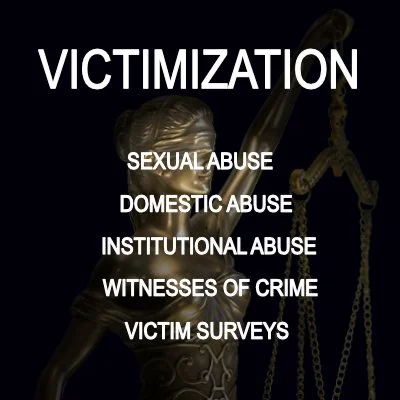Child Trafficking into Forced Labor on Lake Volta, Ghana : A Mixed-Methods Assessment
By Kirsten Singleton, Katrina B. Stone, and Julie Stricker
Past studies have demonstrated the presence of child work, child labor, and child trafficking within Lake Volta’s fishing industry—highlighting that many children live outside the legal safeguards Ghana has established to protect child welfare—and have also documented the hazards and hardships faced by these children. However, prior to this mixed methods baseline study, the extent of child trafficking into forced labor on Lake Volta could only be inferred. The purpose of this baseline study was to document the scope and nature of child trafficking in Lake Volta’s fishing industry. Methodology IJM conducted two primary data collection efforts: 1) an operational assessment in the southern region of Lake Volta in 2013; and 2) a qualitative research study in destination and source communities in 2015. 1. Operational assessment in the southern region of Lake Volta: In 2013, IJM conducted an operational assessment on Lake Volta to determine the scale of child trafficking into forced labor. This assessment was conducted in IJM’s intended project area (the southern portion of the lake, which ranges from south of the Abotasi fishing village and east of the Akosombo Dam). Over the course of 17 days during June and July, data collectors conducted interviews with children and/or adults in a total of 982 occupied boats (canoes) classifying the trafficking status of all children interviewed or observed. 2. Qualitative study in destination and source communities: In 2015, IJM hired a local Ghanaian research firm to conduct in-depth qualitative research in the top three destination and top three source communities identified by the southern operational assessment. In total, the study team conducted 32 focus group discussions with targeted community members involved in Lake Volta’s fishing industry—including young adults who had worked in the fishing industry as children; men in the fishing industry; women in destination communities who host children; and parents/guardians who send children to Lake Volta—and interviewed 51 key informants. To further triangulate information, the study team documented five accounts with survivors of trafficking and profiled six fishing villages in which focus group discussions were conducted. Results - Findings from the distinct yet complementary studies in 2013 and 2015 reveal that the majority of children working in Lake Volta’s fishing industry are 10 years old or younger. This shows that the majority of children are too young to legally conduct the hazardous tasks inherent in many aspects of the fishing industry. Although the 2013 operational assessment overwhelmingly found boys working on Lake Volta (99.3% of children on the southern region of the lake were boys), the 2015 study found that girls also work in—and are trafficked into—the fishing industry. The findings demonstrate that girls have different roles in the fishing industry, completing most tasks somewhere onshore or further inland instead of on the lake where the 2013 assessment occurred. The 2015 study also revealed that both boys and girls have physically demanding, and sometimes hazardous, roles in Lake Volta’s fishing industry. The 2013 operational assessment found that more than half (57.6%, 444/771) of children working on southern Lake Volta’s waters were trafficked into forced labor. In 2015, each of the fishing communities sampled during the qualitative study confirmed the presence of child trafficking. Across destination communities, most respondents estimated that 60% or more of the children working in the fishing industry were born in other communities. In source communities, most respondents estimated that between 20-50% of children leave the community specifically to work in Lake Volta’s fishing industry. Data collection in 2013 and 2015 found that children trafficked into the fishing industry had contractual agreements for their exploitation, which were frequently between the trafficker and the child’s parent/guardian. The 2015 study found that while many perpetrators may be low-income fishermen themselves, they do not use trafficked children merely to survive. In fact, exploiting trafficked children enabled them to send their biological children to school and provide better accommodations and clothing for their own family. One male survivor accounted that, “We were more or less like house slaves, because their own children did nothing.” Thus, several factors distinguished trafficked from non-trafficked children, including: access to education, working conditions—such as working longer hours and being assigned more intense, hazardous, or difficult tasks—and improper clothing and shelter. Physical violence committed against children was widespread in Lake Volta’s fishing industry, with parents/guardians in source communities reporting that children were “beaten like goats.” While trafficked children overwhelmingly experienced violence, this was not unique to trafficked children due to the cultural acceptance of physical discipline in Ghana. Qualitative data in 2015 revealed that traffickers controlled children through violence and limiting access to food; and sometimes kept older boys in their employment through sexual rewards and marriage. The latter control tactics rendered girls in the fishing industry vulnerable to multiple forms of victimization. These means of control combined with the working and living conditions affected trafficked children, with key informants citing that survivors displayed signs of trauma and underdeveloped social skills. Further, although everyone acknowledged that there are government programs in place and NGOs that serve trafficking survivors, the service needs of trafficked children far exceeded the availability and accessibility of services. Recommendations The study’s results revealed the need for a holistic, multidisciplinary anti-trafficking intervention which includes: 1) prioritizing the arrest, prosecution and conviction of perpetrators of child trafficking into forced labor and the related psycho-social support of trafficked children; and 2) reducing vulnerability through increased access to education and through economic empowerment. The information in this report can help inform strategies for the identification and investigation of cases of child trafficking, including: methods to reach hidden populations and routine monitoring of trafficking hotspots. Once identified, trafficked children must be provided with appropriate services by the Ghanaian government as well as other community and non-governmental stakeholders. Findings demonstrate the need for strong trauma-informed recovery services for survivors and reintegration support.
Washington, DC: International Justice Mission, 2021. 98p.


